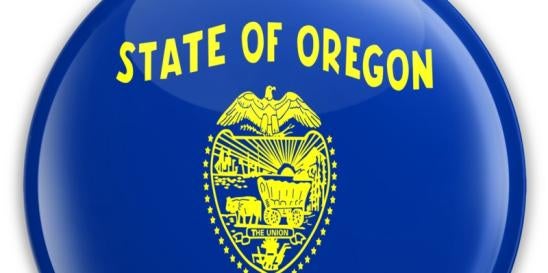On January 12, 2024, the Oregon Employment Department (OED) promulgated new regulations to clarify its procedures and criteria for implementing Paid Leave Oregon. As discussed further below, these regulations relate to benefits administration and appeals and equivalent plans, among other topics.
Quick Hits
- The Oregon Employment Department issued final rules to clarify its procedures and criteria for implementing Paid Leave Oregon.
- Paid Leave Oregon applies to employers that have at least one employee in Oregon.
- The rules address verification for safe leave purposes due to bias crimes, family member “affinity status,” job protection rights and health insurance premium repayments, reporting requirements, and appeals for equivalent plans.
Paid Leave Oregon went into effect on January 1, 2023, and employees began applying for benefits by September 3, 2023. Paid Leave Oregon provides an employee with compensated time off from work to care for and bond with a child following the child’s birth or adoption, to recover from a serious health condition or care for a family member’s serious health condition, or to take leave if the employee or the employee’s family member has experienced domestic violence, sexual assault, stalking, or harassment.
Paid Leave Oregon applies to employers with at least one employee in the state of Oregon. Large employers (those that employ twenty-five or more employees worldwide) must contribute to the Paid Leave Oregon fund. Small employers (those that employ fewer than twenty-five employees worldwide) can opt out of contributions. However, employers of all sizes with at least one employee in Oregon must withhold an Oregon employee’s Paid Leave Oregon contributions from their paychecks, and such employees have job protection rights under Paid Leave Oregon regardless of the size of their employer.
The OED provides a Paid Leave Oregon model notice for employers to post in their workplaces.
Verification for Safe Leave Purposes Due to Bias Crimes
House Bill (HB) 3443, which Governor Tina Kotek signed into law in July 2023, amended Oregon’s domestic violence leave law to include protected leave for victims of bias crimes. A “bias crime” is defined as “the commission, attempted commission, or alleged commission of an offense” because of “the person’s perception of the other person’s race, color, religion, gender identity, sexual orientation, disability, or national origin.” Oregon’s domestic violence leave law applies to employers with six or more employees in Oregon during twenty or more calendar workweeks in the year. An employee is eligible to take this protected leave if he or she is a victim of domestic violence, harassment, sexual assault or stalking, or is the parent or guardian of a minor child or dependent who is such a victim. Covered employers must provide protected leave to eligible employees to seek legal, medical, or relocation assistance to ensure the health and safety of the employee or their minor child or dependent.
Because eligible employees may take Paid Leave Oregon for the same purposes as under Oregon’s domestic violence leave law (known as “safe leave”), the OED’s new regulations amend the verification needed for safe leave purposes due to bias crimes. An employee seeking to take Paid Leave Oregon for reasons related to domestic violence, harassment, sexual assault, stalking, or bias must provide the following documentation:
- A copy of a federal agency, state, local, or tribal police report indicating the employee was a victim
- A copy of a protective order or other evidence from enforcement agencies or an attorney that the employee or employee’s child appeared in, or was preparing to appear, in a civil, criminal, or administrative proceeding as a victim
- Documentation from an attorney, law enforcement officer, healthcare provider, licensed mental health professional or counselor, member of the clergy, or employee of the U.S. Department of Justice that the employee is undergoing treatment or counseling or relocating as a result of being a victim
‘Affinity’ Status of a Family Member
Paid Leave Oregon defines “family member” as an employee’s “spouse, same-gender domestic partner, biological child, adopted child, stepchild, foster child, same-gender domestic partner’s child, parent, adoptive parent, stepparent, foster parent, parent-in-law, same-gender domestic partner’s parent, grandparent, grandchild, and anyone related to the employee by blood or anyone who lives with or is connected to the employee like a family member.” The OED’s new regulation outlines a number of factors to help the department assess whether an “affinity” relationship exists:
- “Shared personal financial responsibility, including shared leases, common ownership of real or personal property, joint liability for bills, or beneficiary designations”;
- “Emergency contact designation of the [employee] by the other individual in the relationship, or vice versa”;
- “The expectation to provide care because of the relationship or the prior provision of care”;
- “Cohabitation and its duration and purpose”;
- “Geographical proximity”; and
- “Other factors that demonstrate the existence of a family-like relationship.”
No single factor is determinative, and the OED will consider the relationship under the “totality of the circumstances.” Senate Bill (SB) 999 aligned the definition of “family member” between Paid Leave Oregon and Oregon Family Leave Act (OFLA), which is enforced by the Oregon Bureau of Labor and Industries (BOLI). Accordingly, the BOLI is expected to promulgate similar regulations for the affinity status of a family member under OFLA.
Job Protection Rights and Health Insurance Premium Repayment
SB 999 aligned an employee’s job protection rights after taking OFLA and/or Paid Leave Oregon. The OED’s new regulation clarifies that when an employee’s position no longer exists upon returning from Paid Leave Oregon, a large employer must offer an employee any available equivalent position with the same pay and benefits at a job site located within fifty miles of the job site of the employee’s former position.
If the employer pays any part of the employee’s share of health insurance premium while the employee is on Paid Leave Oregon leave, the OED’s new regulations allow the employer to deduct from an employee’s future paychecks the employee’s share of health insurance premiums paid by the employer until the amount is repaid. The employer may deduct up to 10 percent of the employee’s gross pay each pay period after the employee returns to work until the premium amounts are repaid.
Reporting Requirements and Appeals for Equivalent Plans
With approval from the OED, employers may use third party administrators to administer Paid Leave Oregon benefits under an equivalent plan. Employers with equivalent plans must adhere to Paid Leave Oregon’s reporting requirements. Employers must file annual aggregate benefit usage reports “on or before the last day of the month that follows the close of the calendar year,” and should include information such as—but not limited to—the number of benefit applications received, approved, or denied during the reporting period and the qualifying purpose, and the total amount of leave.
Employers that assume only part of the cost of the equivalent plan and withhold employee contributions must report the aggregate financial information with the OED “on or before the last day of the month that follows the close of the calendar year.” The report should include information such as the total amount of employee contributions withheld during the reporting period, total plan expenses paid during the reporting period, and the balance of employee contributions held in trust at the end of the reporting period.
Paid Leave Oregon provides a dispute resolution process through the OED to resolve disputes between employers or equivalent plan administrators and employees regarding coverage and benefits. Under the OED’s new regulations, if the employer or administrator and employee are unable to resolve the dispute, either party may request an administrative hearing with the OED. The request must “[b]e in writing, by phone, online, or in another format approved by the [OED],” and submitted with a copy of the appealable decision within sixty calendar days of the issuance of the decision or as soon as practicable after the sixty-day deadline if there is good cause. The OED will review the dispute and issue a determination based on the equivalent plan requirements within twenty calendar days of the request. If the employer or administrator does not comply with the OED’s determination, the employee may submit a wage claim with the BOLI.





 i
i


